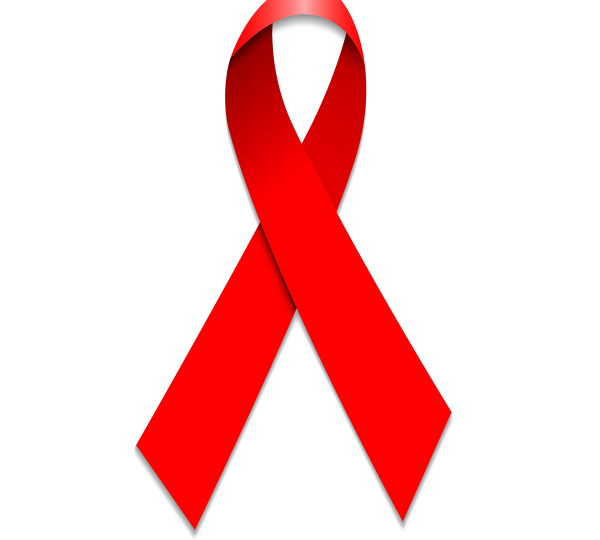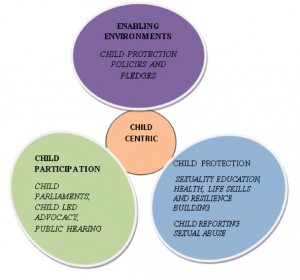
The UNICEF/UNCRC definition of a child – “A person below 18 years of age,” is the definition that INSA-India’s programmes stand by. In today’s India, we do not yet have a listing of children living with and affected by HIV. Estimates put children less than 15 years of age at 7% of the HIV infections in India (1,45,000). Most of these children are now reaching puberty, and concerns regarding their future are emerging. A brief count of children living with and affected by HIV in six districts of Maharashtra revealed that over 60% of them are above the age of 12 years. This article hopes to spur and scale up innovative responses keeping in mind the best interest of children facing challenges related to living with HIV, their poorly supported transition from childhood to adolescence, their vulnerability to child sexual abuse, and the poor systems approach to child protection prevailing in India.
The backdrop
It is a well-documented fact that 53% children in India reported being sexually abused and only 7% of them reported the abuse to a trusted adult. Most of the abuse happened in homes. Most times the abuser was a person the child trusted. The grooming process used by abusers and the abuse of children is encouraged when child sexual abuse is not acknowledged as a reality by care givers or the environment. Further, apart from a bandaging, quick-fix response to the news reports of child sexual abuse, institutions looking after children do not mandatorily have to develop and implement child protection policies or systems[1].
Most child-care programmes use the beneficiary approach of rendering care to children living with and affected by HIV (provision of food, education and shelter). The participation of children in their own care, wellbeing and planning for the future is poor. Further, most organisations working with children do not have risk management systems (child protection systems) in place for protecting children. Newer laws for the protection of the children from sexual abuse (POCSO, 2012, and the Integrated Child Protection Scheme, 2010) in India are poorly understood by the management and staff of Orphan and Vulnerable Child (OVC) care programmes.
Within this backdrop, the social protection of children living with, or affected by HIV needs to be strengthened to enable children to grow to their full potential happily. That children and adolescents living with, and affected by HIV are a new generation, not much studied for a scientific delivery of rights-based services is a fact.
Further, in the time of adolescence, children living with, or affected by HIV experience poor support systems to nurture them through the critical changes of adolescence that they experience due to the absence/death of parents, migration from their communities, and stigma and discrimination. Compounding this fact are the widespread political debates related to sex education in schools with prevailing attitudes that it ‘corrupts the youth’ and offends ‘Indian values leading to promiscuity, experimentation and irresponsible sexual behaviour’!
Windows of opportunity
The Ministry of Women and Child Development’s Integrated Child Protection System (ICPS) has included children living with HIV as part of the ‘vulnerable children’ category for strengthened protection. The Protection of Children from Sexual Offenses Act (POCSO), 2012, includes sexual offences that are penetrative, non-penetrative and virtual[2] for both boys and girls. Further, Section 21(1) makes reporting of sexual offenses against a child mandatory. Karnataka Network of Positive People has already developed their Child Protection Policy.
In 2010, INSA India developed Child Parliaments in homes caring for children living with HIV. Through the child parliaments, where children elected their Prime Minister, who in turn selected five Ministers, children learnt about safe and unsafe touch. They created plans to share information with peers they met in school and in the community on ‘Run, Yell and Tell’ as a response to any unsafe touch. Through the Child Parliament they worked out ways to adhere to ART (Anti-Retroviral Treatment), which some children playfully spat out earlier. They also were able to plan how to manage their feelings of attraction and love without burdening or abusing the object of their attention. The drop boxes in child-care institutions answer their growing up concerns anonymously. The INSA-India Child Parliament model is now being piloted for scale up through the partnership with Karnataka Health Promotion Trust in other children’s homes in Karnataka and Maharashtra.
The way things stand
However, neither the life skills and resilience-building approach nor the Child Parliament approach works unless the institutions and networks caring for children develop child-friendly, enabling and protective environments. This is sustainably possible when organisations and networks develop child protection policies and programmes. A baseline study undertaken by INSA-India showed that none of the anganwadi workers, teachers, and child care workers knew the child helpline number in 2010 even though India ratified the United Nations Convention for the Rights of a Child (UNCRC) in 1992. Even today, most teachers, NGO leaders and workers in the HIV world in India are not aware of child’s right to survival, development, protection and participation upheld by UNCRC. The correct behaviour protocols when working with children then seems a very alien concept to most. Aamir Khan’s second episode of his popular TV show, Satyamev Jayate notwithstanding, people still have to wake up to the reality of one in two children being sexually abused. In the past five years, simplifying the process for meaningful development and implementation of child protection policies has enabled several organisations to promote child participation in their protection, deal with child abusers and create enabling protective environments for children to manage their own sexuality, HIV, and challenges life throws them, with resilience.

Discussion on sexuality and HIV has added dimensions when considering children and adolescents living with HIV. While child participation and child protection are two basic rights every child has, they are incomplete unless supported by a commitment of adults to mandate child protection policies and systems. Child sexual abuse is never a child’s fault. It’s time adults woke up to the fact that child sexual abuse is a reality and move mountains to protect the vulnerable—children living with HIV. It is the child’s right.
[1] The National Policy for Children (2013) uses terms such as ‘promote’ and ‘encourage’ but does not mandate it.
[2] Here, ‘virtual’ stands for sexually explicit communication through equipment like the social media, text messages and so forth. It includes cybersex, phone sex, sexting or any other form of digital communication use for the purpose of transmitting sexually explicit messages.